02:17
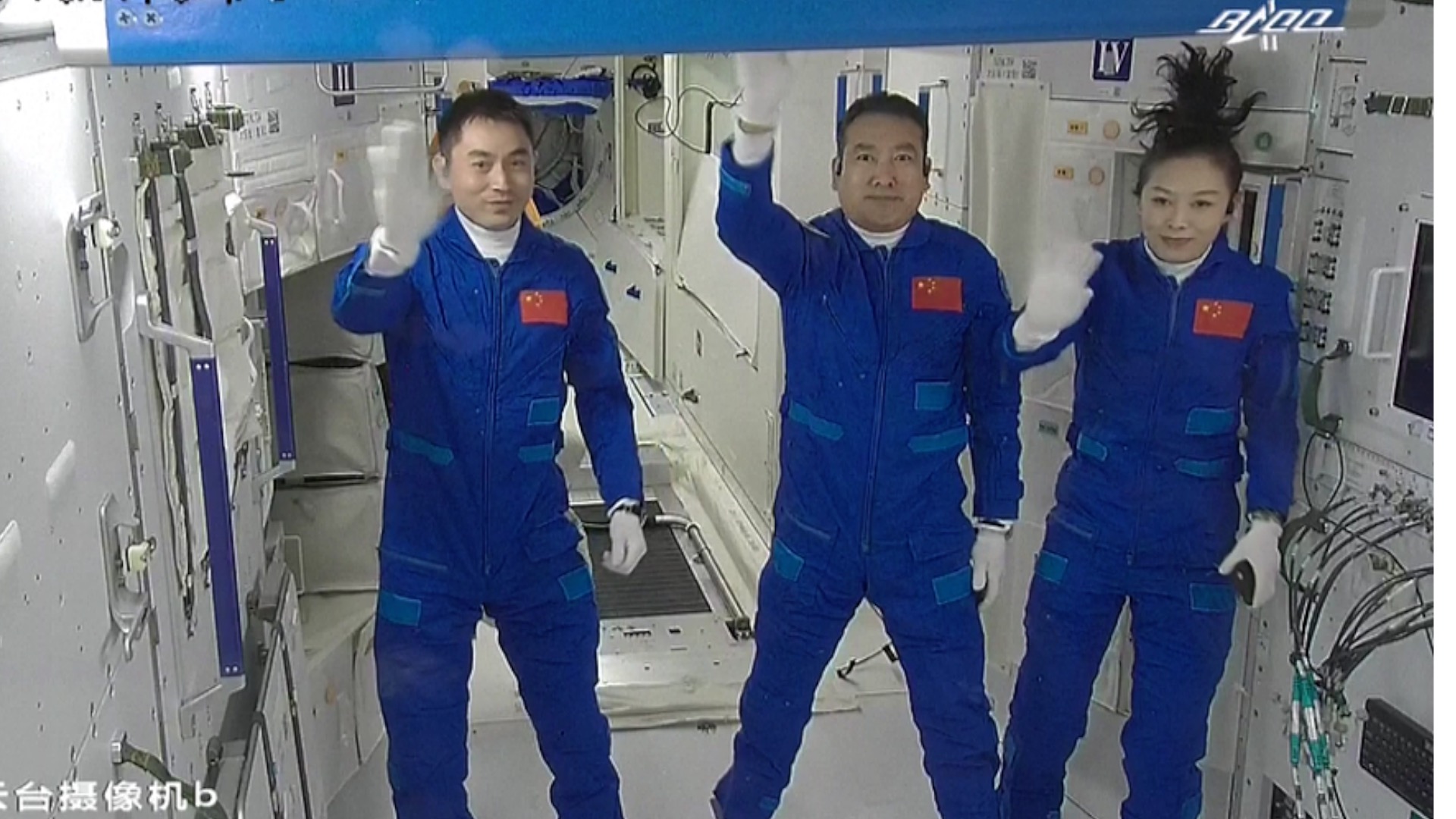
Chinese astronaut or taikonaut Wang Yaping, 41, has made history again as she's now the first Chinese woman to stay in orbit for more than 100 days.
Wang, together with her two male crew mates Zhai Zhigang and Ye Guangfu, were sent into China's space station aboard the Shenzhou-13 spaceship on October 16, 2021 for a six-month stay – the longest ever in-orbit duration for taikonauts.
As of Sunday, the team has spent three months in space. This is Wang's second trip into space, following her first from June 11 to 26 in 2013 on the Shenzhou-10 mission.
It has been fruitful three months for the Shenzhou-13 taikonauts, who have successfully completed a series of tasks including two extravehicular activities (EVAs), also known as spacewalks, a live science lecture from space and a manual rendezvous and docking test of Tianzhou-2 cargo vessel.
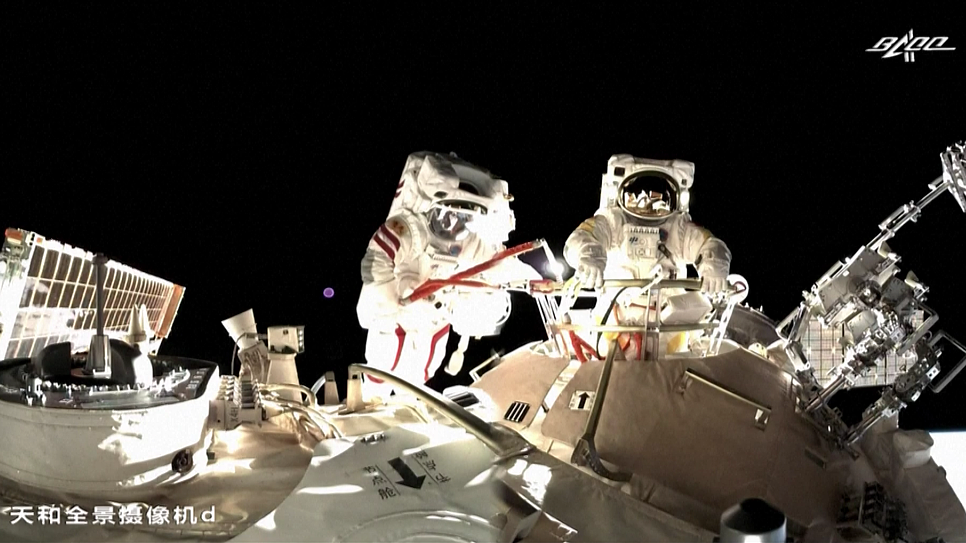
Taikonauts Zhai Zhigang (L) and Wang Yaping (R) conduct extravehicular activities outside the Tianhe core module of China's space station, November 7, 2021. /CFP
Taikonauts Zhai Zhigang (L) and Wang Yaping (R) conduct extravehicular activities outside the Tianhe core module of China's space station, November 7, 2021. /CFP
First spacewalk
On November 7, 2021, the Shenzhou-13 crew conducted their first spacewalk, during which Zhai and Wang went outside of the space station while Ye stayed inside to aid their operations.
The 6.5-hour long mission further tested the functions of the China-developed new-generation extravehicular spacesuits known as Feitian, the coordination between the taikonauts and the mechanical arm, and the reliability and safety of supporting equipment related with the EVAs at the space station.
Wang, the first Chinese woman to have boarded the space station, became the country's first female to have conducted a spacewalk.
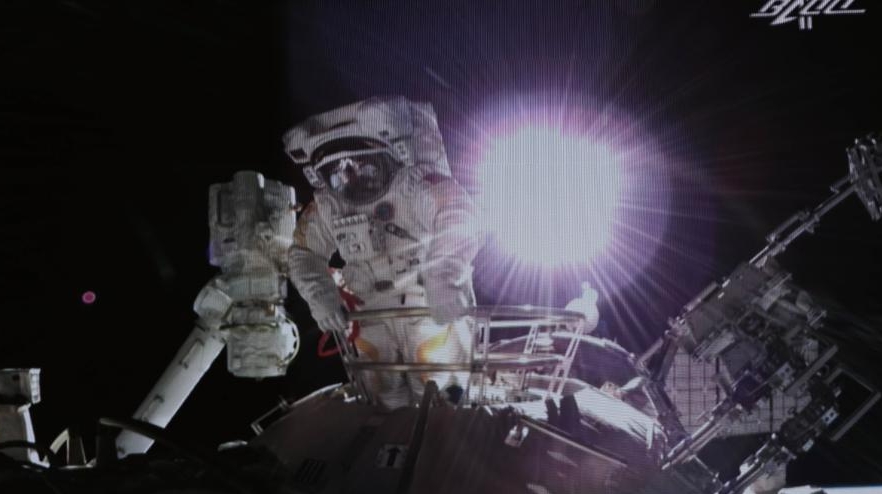
Screen image taken at Beijing Aerospace Control Center on December 26, 2021 shows taikonaut Ye Guangfu exiting the space station core module Tianhe. /Xinhua
Screen image taken at Beijing Aerospace Control Center on December 26, 2021 shows taikonaut Ye Guangfu exiting the space station core module Tianhe. /Xinhua
Second spacewalk
On December 26, 2021, the team performed the second EVA, with the two male taikonauts venturing out of the space station and Wang staying inside to support their work.
These EVAs further tested the function and performance of the core module's airlock cabin, the extravehicular suits and mechanical arm, and also assessed the coordination between the taikonauts and the space station, and coordination between space and Earth.
EVAs have become a norm in space station missions, and Chinese taikonauts will carry out more frequent and complex EVAs in the future for the smooth construction and stable operation of the space station.
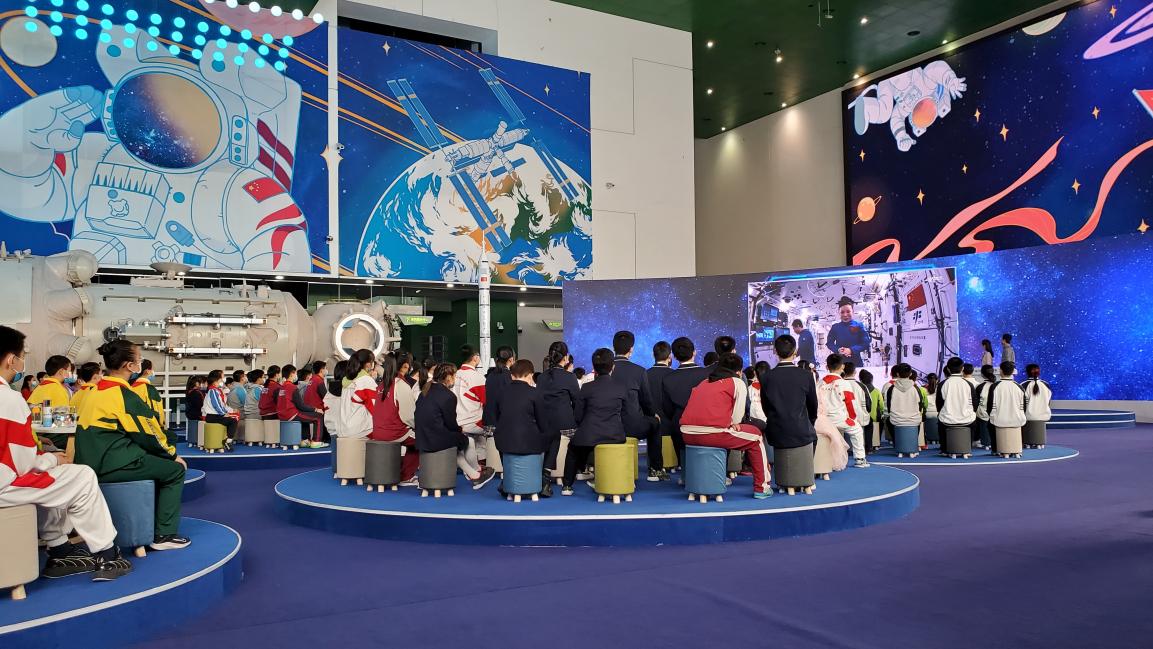
Students attend a livestreamed class given by China's Shenzhou-13 crew members, at the China Science and Technology Museum in Beijing, China, December 9, 2021. /CGTN
Students attend a livestreamed class given by China's Shenzhou-13 crew members, at the China Science and Technology Museum in Beijing, China, December 9, 2021. /CGTN
A live science lecture from space
On December 9, 2021, the trio livestreamed their first science class from the space station, inspiring tens of millions who watched the class through live broadcasts.
The hour-long class was attended by 1,420 students on Earth in five classrooms across China in Beijing, Guangxi Zhuang Autonomous Region, Sichuan Province, Hong Kong and Macao special administrative regions with the support of relay satellites.
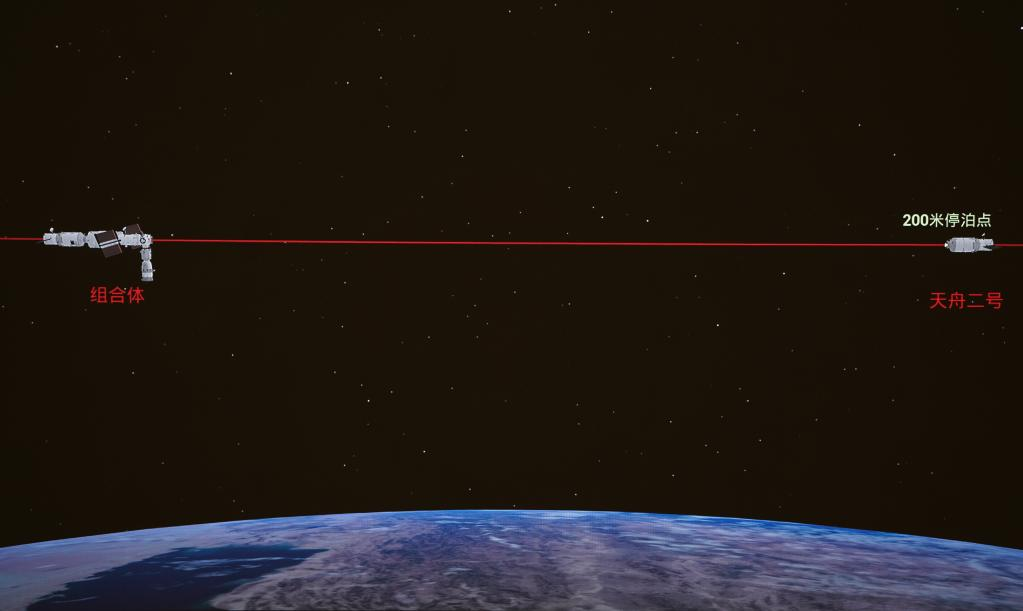
Screen image taken at Beijing Aerospace Control Center on January 8, 2022 shows the process of the manual rendezvous and docking experiment of China's space station with the Tianzhou-2 cargo craft. /Xinhua
Screen image taken at Beijing Aerospace Control Center on January 8, 2022 shows the process of the manual rendezvous and docking experiment of China's space station with the Tianzhou-2 cargo craft. /Xinhua
Manual rendezvous and docking test
On January 8, the Shenzhou-13 crew conducted a manual rendezvous and docking test between the Tianzhou-2 cargo spacecraft and the space station.
In the complex maneuver, the taikonauts first teleoperated Tianzhou-2 to separate from the Tianhe core module of the space station and guided it to the planed parking point, then guided it back towards Tianhe to dock with it.
The manual teleoperation is a backup for automated rendezvous and docking of unmanned visiting spacecraft.
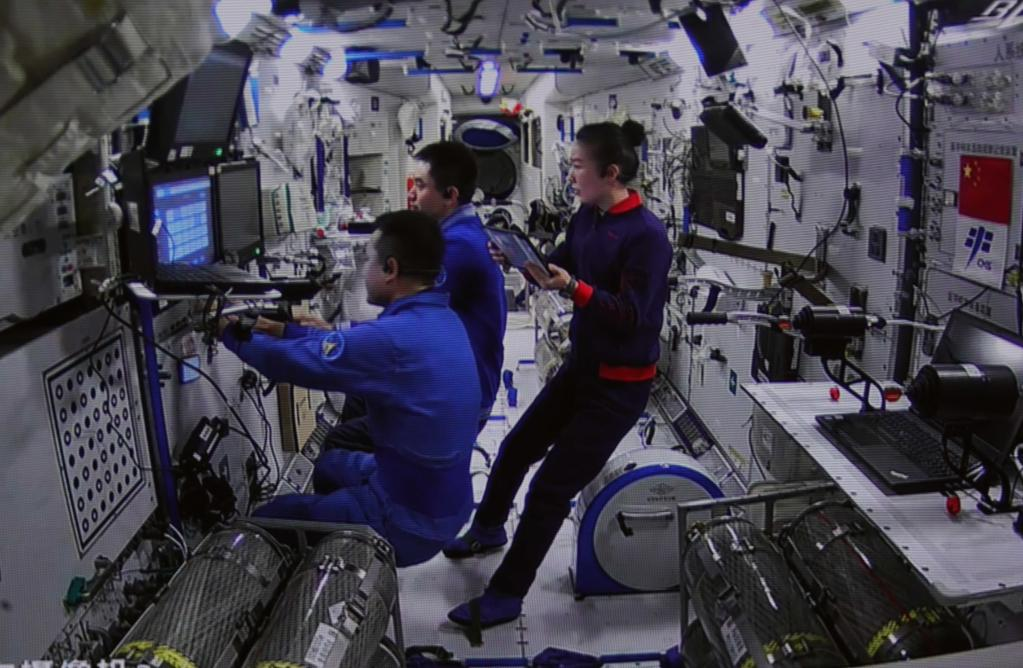
Screen image taken at Beijing Aerospace Control Center on January 8, 2022 shows the Shenzhou-13 astronauts in China's space station core module conducting the manual rendezvous and docking experiment with the Tianzhou-2 cargo craft. /Xinhua
Screen image taken at Beijing Aerospace Control Center on January 8, 2022 shows the Shenzhou-13 astronauts in China's space station core module conducting the manual rendezvous and docking experiment with the Tianzhou-2 cargo craft. /Xinhua
In addition to the tasks above, the Shenzhou-13 taikonauts have also conducted space experiments and medical checks, alongside more routine work such as inspection and daily maintenance of the space station, and in-orbit training such as for emergency evacuations and medical rescues.

